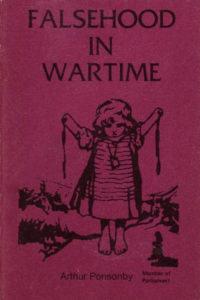 Considerations on the definition of Propaganda and its use in times of war
Considerations on the definition of Propaganda and its use in times of war
Lord Arthur Ponsonby in his book Falsehood in wartime: Propaganda lies of the First World War denounced the whole battery of lies and propaganda that had circulated in the press of the warring countries in the First World War. False news has always existed, and has always been a useful resource for social actors on the stage. For Ponsonby, the propaganda with which governments fed the public mind of their populations was a sinister way of educating them:
With intruders, letter openers, decoders, telephone operators, spies, an interception department, a counterfeit department, a criminal investigation department, a propaganda department, an intelligence department, a censorship department, a ministry of information, a press office, etc., the various governments were well equipped to "instruct" their people [1] .
Ponsonby's work lists and describes the propaganda with which the populations had been induced to war. The French philosopher Jaques Ellul did not have a very different idea of what was being propagated. In fact, he went further, thinking that propaganda not only instructs, but gives an existential sense to the individual.
Western man, says Ellul, is a victim of meaninglessness and emotional emptiness. That is where the media system appears as a solution to his inner emptiness, that is where the individual is exposed to the propaganda that gives meaning to life, that reintegrates him into society[2].
Propaganda borrows a part of the individual and makes him live an artificial life. He lives a life created by someone else [3] . For Ponsonby, propaganda instructed the public mind; for Ellul, it created it.
There are authors who differentiate Political Communication from Propaganda on the basis that the former is a discursive exchange of positions, generally in opposition to each other. However, propaganda seeks an adherence to an idea without discussion or deliberation. Propaganda nullifies the participation of political actors other than propagandists. In this way, propaganda becomes a unidirectional communication that does not allow for open response [4].
Harold Laswell tells us that propaganda is the management of collective attitudes through the manipulation of meaningful symbols [5]. Linenbarger understood propaganda as the planned use of any form of mass communication designed to influence the minds and emotions of a given group for military, economic or political purposes [6].
Jowett, Garth, and Victoria O'donnell, in their work Propaganda & Persuasion, consider propaganda to be "the deliberate and systematic attempt to shape perceptions, manipulate understanding, and direct behavior to achieve a response that deepens the desired intent of the propagandist. The authors believe that language and images with slogans, posters, symbols, and even architecture must be used to shape perceptions [7].
For their part, Morris and Goldsworthy maintain that propaganda is the orchestration of persuasion. For the authors, the propagandist must seek to influence the thought and action of the recipient. It is not only the media that are used; school, architecture, design, literature, music, fashion, advertisements, rituals... all those activities where humans pay attention can serve to influence others [8] .
It should be noted that the use of propaganda is not new; it has always been used. As James Fergurson argues in his analysis of Alexander the Great's public life, propaganda is not just about disseminating truths or lies, but is based on the generation, elimination, and perforation of transmitted knowledge, which influences national identities and political power. Propaganda must generate information that is assimilated into knowledge and that influences other political actors in order to allow the execution of a specific political project [9].
In tactical and operational terms, propaganda can be understood as the persuasion of the receiver's perception towards aptitudes, behaviors or thoughts sought by the sender through the creation or manipulation of symbols, slogans or other external elements. In strategic terms, propaganda must have a basis that includes political or philosophical projects of deep social significance; tactical elements must lead to strategic reasons. A tactical slogan or symbol cannot be dissociated from a strategic objective.
Scott McDonald, doctor in International Relations and specialist in military interventions, describes the three basic types of propaganda propagation; white, grey and black propaganda. White propaganda has the recognized broadcasting source, usually an authority. In black propaganda the broadcasting source is false, it is a disguised emitter, a simulation. In gray propaganda, the source is not well defined [10].
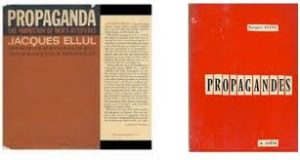 Propaganda and Policies
Propaganda and Policies
The differentiation in the broadcast of propaganda allows different designs and strategies to reach the society or the target group. In the detailed work Propagandas, Jacques Ellul gives us a broader, more instrumental, and more social vision of propaganda. For Ellul a main dimension was psychological action, in which the propagandist seeks to modify opinions through psychological manipulation.
Another dimension was psychological warfare, where propaganda is used by a foreign adversary who is sought to demoralize and is made to doubt his beliefs and objectives. Another essential function of propaganda is that of re-education and brainwashing; here the whole transformation of the enemy is sought. This type of propaganda, which was more of a psychological tool for application to individuals, is characteristic of communist China and Russia.
The last essential dimension of propaganda for Ellul is that of public and human relations. In this last kind of propaganda, the individual is alienated from society, from a standard of living, from a way of being. For the French sociologist, propaganda included techniques of psychology and social organization[11]. As was explained at the beginning of the article, for Ellul, propaganda is the essence of many people's lives in the modern world.
Ellul gives us two typologies of propaganda that are of great help in understanding the nature of it; political propaganda and sociological propaganda. Sociological propaganda is long-term propaganda, and it is the one that precedes political propaganda; a society has to be previously influenced by sociological propaganda for political propaganda to be accepted, to have meaning and effect.
Sociological propaganda influences the social framework, political propaganda influences the opinions and aptitudes of the individual [12] . Political propaganda can be strategic or tactical. The former establishes the general line, constituting the set of arguments, while the latter seeks immediate results within the general line [13].
Tactical propaganda can be seen as the direct propaganda proposed by Lasswell [14]. Sociological propaganda is broader, more strategic by default. It seeks to unify the behavior of individuals in a single social body. It seeks to influence a specific lifestyle, not mere opinions [15]. It is usually distributed through advertisements, public relations, human engineering, mass films, etc. The characteristic of sociological propaganda promoted from the spheres of the state is that all these propagandistic influences converge at the same point.
If the sociological propaganda is exercised by disparate and different forces, the sociological propaganda usually diverges in the objectives. In broad terms, sociological propaganda is the induction of an ideology through its sociological context [16]. As we have seen above, political propaganda made up of slogans and arguments must be linked to sociological propaganda, which is strategic in nature.
Another distinction within the propaganda proposed by Ellul is integration propaganda versus agitation propaganda. Integration propaganda is long-lasting and seeks the uniformity of society; it is permanent propaganda [17]. In many aspects it is similar to sociological propaganda. Agitation propaganda is more sporadic, is based on hatred of an enemy, and affects especially people who are less culturally and intellectually prepared [18].
It is similar to political propaganda. Ellul also differentiates vertical and horizontal propaganda. Vertical propaganda comes from the elites; horizontal propaganda is produced by interactions within social groups [19]. Harold Lasswell and Dwight Blumenstock speak to us in their analysis of the communist groups in Chicago about how they made playful and festive protests in order to help members communicate their ideas. This was horizontal propaganda according to Ellul.
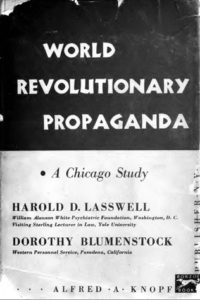 Harold Lasswell and Dwight Blumenstock analyzed propaganda qualitatively and quantitatively from the interwar period. In their work World revolutionary propaganda: A Chicago study they affirmed, together with Lippmann and Bernays, that social groups can be controlled by means of collective symbols and leaders[20].
Harold Lasswell and Dwight Blumenstock analyzed propaganda qualitatively and quantitatively from the interwar period. In their work World revolutionary propaganda: A Chicago study they affirmed, together with Lippmann and Bernays, that social groups can be controlled by means of collective symbols and leaders[20].
Lasswell defined propaganda as the control of skills through the manipulation of symbols, understanding symbols as both words that evoke images and the images themselves [21]. Thus the word "freedom" is a verbal symbol, while "We want more freedom" is a slogan. Similarly, the verbal symbol "freedom" can be represented by an image or a logo.
Ellul explains the importance of the manipulation of symbols in three points; First, he persuades the individual to enter the framework of an organization. Secondly, it provides him with motives, justifications and motivations for action. Third, it obtains their total loyalty [22]. In their work, Lasswell and Blumenstock assume that revolutionary propaganda directs social discontent against the symbols of the established order, while at the same time organizing favorable attitudes toward the symbols that they control [23].
Lasswell and Blumenstock emphasize the importance of the slogan. They consider that propaganda has an orientation for the masses, and for this reason it must be brief, clear and forceful [24]. The authors say that the slogan is the recognizable unity of propaganda, and that all policies are deliberately and universally reduced to slogans [25].
This fact had already been warned by German National Socialism; in fact, Hitler in Mein Kampf wrote; "The receptive capacity of the masses is limited and has the great capacity to forget. That is why effective propaganda must be reduced to a few points, which must be presented in the form of slogans, so that everyone can understand" [26].
Following his party leader Goebbles wrote; "By simplifying the thoughts of the masses and reducing them to primitive models, propaganda could present the complex processes of political life and the economy in simple terms. We took matters previously available only to experts and a small number of specialists, brought them to the streets and inserted them into the minds of ordinary citizens. By presenting the issues as black or white, public opinion quickly crystallizes [27].
It is curious that Vladimir Lenin in 1902 made a distinction between intellectual members of society and workers; for Lenin propaganda was more sociological, and was at the same time argumentative for consumption by educated people. Agitation for Lenin referred more to political propaganda of slogans, propaganda of agitation; this was the propaganda that Lenin suggested should be used with the workers [28].
From liberalism, from fascism, and from communism, the need to simplify information for a good part of the population was clear; the myth of a democratic rational-deliberative society had no place in practice under any political philosophy.
Ellul assumes these simplification theses years later saying that propaganda helps to give a framework of understanding to citizens; it simplifies matters so that they can give coherence to the news they consume. Effective propaganda gives citizens a tool to understand the world as a whole, and it justifies the actions that citizens take [29].
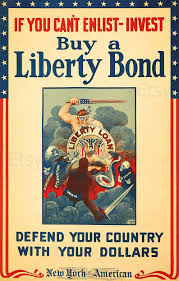 Propaganda and Democracy
Propaganda and Democracy
Years earlier Harold Lasswell wrote Propaganda technique in the World War. Such a detailed analysis of propaganda technique in war did not escape Edward Bernays. The proclaimed father of public relations in his article The marketing of national policies: A study of war propaganda includes Lasswell's main theses synthesized into six elements;
- Propaganda must blame the war on the enemy
- Propaganda must proclaim unity and victory in the name of God and history
- The state has to justify the war with objectives such as "we fight for security" "we fight for a better social order" etc....
- Establish in the population's belief that the war is the enemy's fault, for example, by making propaganda for the enemy's evil.
- Making people believe that negative news is enemy propaganda
- Using these techniques mixed with atrocity propaganda [30] .
These points remain essential when manipulating the audience's perception of reality in the course of a conflict, of course, for the benefit of the propagandist. Bernays suggests that the rapid emergence of fascism, communism and national socialism was accelerated by the manipulation of symbols through the modern media [31].
The author indicates that the field of public relations emerged from the knowledge of the mind, and human relations, from different academic disciplines after the studies on war from 1917 [32].
From that date onwards it was known in detail how to get ideas accepted through feeling, reason, habit, authority, persuasion and objective evidence. The public mind became a primary target for industry and government; detailed techniques were known for linking private interests to public desires[33].
This idea is shared decades later by Ellul, who states that without the scientific rules established by different social academies there would be no lines of action for propagandists [34]. Along with the new scientific rules, the means of communication such as the radio, the written press or the movies are indispensable, which allow, as Gabriel Tarde affirmed, grouping dispersed individuals in the mass [35]
Bernays then states that from the knowledge that emerged from the analysis of the First World War came the engineering of consensus in democratic systems [36]. Psychological warfare made incursions into democratic systems in times of peace, having been financed by war budgets.
Lasswell stated in his study on propaganda in the world war; "Propaganda has become a profession. The modern world is busy developing a body of men who do nothing but study the ways and means of changing minds, or linking minds, to their convictions [...] It is to be expected that governments will depend increasingly on professional propagandists for advice and assistance [37].
He was not the only academic with that idea, nor was he the first; Bertrand Russell in his essay Free thought and official propaganda advocated questioning the various official propaganda. Russell was of the opinion that propaganda is one of the elements that increase the credulity of the human being [38]. Russell wrote in 1922;
The art of propaganda, as practiced by modern politicians and governments, is derived from the art of advertising. The science of psychology owes much to advertisers [...] Propaganda, carried out by media that advertisers have found successful, is now one of the recognized methods of government in all advanced countries, and is especially the method by which democratic opinion is created. Propaganda as it is now practiced has two main problems: on the one hand, its appeals are generally to irrational causes of belief rather than to serious arguments; on the other hand, it gives an unfair advantage to those who can obtain the most publicity, whether through wealth or power[39].
Since the beginning of democracy, propaganda had become a form of government in itself. At the end of the 1930's the Institute for Propaganda Analysis was established in the United States, whose objective was to identify foreign propaganda presented to the American population. Propaganda was so trusted as an element of mass manipulation that another major investment in its analysis was provided by the fear of its use by foreign governments on the rear. From this institute came much of the knowledge used mechanically by the propagandists of later decades [40].
 Bernays was a visionary and a pioneer even though he was not the first public relations officer in history. Freud's nephew thought that persuasion was a right, and that the media system was like a door to the public mind, and that once you enter the door you can change the beliefs and abilities of the citizens[41]. Bernays assumed that the mass media were sufficiently developed to "hammer the eyes and ears of America"[42].
Bernays was a visionary and a pioneer even though he was not the first public relations officer in history. Freud's nephew thought that persuasion was a right, and that the media system was like a door to the public mind, and that once you enter the door you can change the beliefs and abilities of the citizens[41]. Bernays assumed that the mass media were sufficiently developed to "hammer the eyes and ears of America"[42].
In this regard, Lasswell stated that "democracy has proclaimed the dictatorship of words, and the technique of dictating to the dictator is called propaganda[43]. The propagandist in charge of building consensus has to create news, he has to know how to create events that can be sold as news with the aim of profiling the people's abilities and actions. The engineer of consensus must succeed in dramatizing the ideas of all those who are not direct witnesses of the events created by the engineer [44].
The clairvoyance with which Bernays approached the manipulation of social beliefs has become a reference for the following generations of propagandists, converted into public relations. Bernays' ideas are fully valid in the 21st century.
Today, a specialized propagandist analyzes the population, focuses on its beliefs, and then puts together a message that prioritizes the social beliefs most favorable to the propagandist [45]. These operations have three basic steps; research, analysis, and then implementation. In the first instance, the psychology of the environment in which one wishes to act is investigated, the objectives are set, and then communications systems or other techniques are used to achieve the objective.
Dr. Henry Victor Dicks, from the Tavistock Institute and member of the Psychological Warfare Intelligence, branch of the Psychological Warfare Division, conducted an analysis of German political attitudes through the interrogation of prisoners of war. The analysis divided the German people into 10% radical Nazis, 25% Nazis with reservations, 40% simply German nationals, 15% passive anti-Nazis, 10% active anti-Nazis. With this information the propagandists were able to prepare much more refined pamphlets and broadcasts to influence more specific social groups [47].
One of the propaganda techniques generally used is to link the propaganda message to general issues of a positive nature, such as "we support life" or "we want to achieve happiness". These links help to simplify the message and create slogans. Propagandists use repetition a lot, even without having to justify the information with data, repetition increases the credibility and acceptance of the statement [48].
The social and natural sciences had given propaganda tools to manage to bring the same message to heterogeneous audiences, achieving the same effect in each differentiated sector. In other words, in good psychological warfare planning, propaganda can make different social sectors end up communicating the same message through "personalized" slogans broadcast in different media.
Public relations and propaganda professionals analyze the different social sectors and the communication channels they use to inform themselves before starting psychological warfare. Thus, for example, the housewife can be reached through TV serials, the teenager through alternative or commercial music songs, and the parent through informative radio programs or print media. Each channel has an individualized message that brings audiences to the same place.
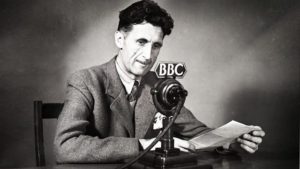 Since the emergence of technology to communicate telematically there has been interest on the part of states to use these means for political purposes. Jacquie L'Etang tells us how the BBC was instrumental in spreading propaganda, because they knew how to do it without being noticed. The author tells us how the novelist George Orwell, when working for the BBC, complained that there were intelligence agents within the BBC doing propaganda work [49].
Since the emergence of technology to communicate telematically there has been interest on the part of states to use these means for political purposes. Jacquie L'Etang tells us how the BBC was instrumental in spreading propaganda, because they knew how to do it without being noticed. The author tells us how the novelist George Orwell, when working for the BBC, complained that there were intelligence agents within the BBC doing propaganda work [49].
State propaganda has had a presence in the media since the time of its existence, before theories of propaganda or psychological warfare were developed. Already since the Second World War, the 4th PSYOP Group operated in the US army, which in the 80's of the 20th century had an enormous capacity to operate in a developed audiovisual system.
Contrary to what is usually assumed, the first televised war was the Franco-Algerian war of the late 1950s, not the Vietnam War; audiovisual communication, more specifically television, had become a basic tool for the transmission of information on politics and conflicts [50].
A government that has its own Public Relations generates propaganda. Ellul tells us that all that propaganda generated through advertisements, public relations, politics, creates a concrete lifestyle. The individual trapped by that propaganda believes he is on the side of the good guys, while he believes that those who do not share that lifestyle are on the side of the bad guys. Society as a whole ends up expressing itself in the terms expressed by sociological propaganda.
As has been explained above, sociological propaganda seeks to modify the environment in which the individual develops, it does not oppose individual beliefs, but rather creates new ones, a new truth, which will be gently permeated by the individual; sociological propaganda suggests rather than convinces him [51].
Propaganda seeks action, not reflection; the more an individual thinks, the less he acts. Propaganda seeks to get individuals to adhere to causes or lifestyles without them thinking about it too much [52]. Propaganda has evolved within the media field. Everything related to propaganda or persuasion has found its place in the semantics of war. Hillary Clinton began to talk about weaponizing information in the 2016 presidential campaign [53].
From Propaganda to Weaponized Narrative
Daniel Levitin gives a brilliant exposition of how the media use weaponized lies and shows us the most common deceptions when presenting information [54] . Braden Allenby explains how the weaponized narrative is a powerful media weapon;
Weaponized narrative is the use of information and communication technologies, services and tools to create and disseminate stories aimed at subverting and undermining the institutions, identity and civilization of an adversary. And it operates by sowing and exacerbating political and social complexity, confusion and schisms. It is an emerging domain of asymmetric warfare that attacks the shared beliefs and values that support an adversary's culture and resistance.
It builds on previous practices, including disinformation, information warfare, psychological operations (psyops), false news, social networking, software robots, propaganda and other practices and tools, and it builds on advances in fields such as evolutionary psychology, behavioral economics, cognitive science, and modern marketing and media studies, as well as technological advances in domains such as social networking and artificial intelligence [55].
More concisely, Herbert Lin states that "weaponizing narrative is "warfare in the information environment: using words and images instead of bombs and bullets. The victims are truth, reason and reflection" [56].
Joel Garreau elaborates more on how war narratives can be used; "Against the United States, for example, he aims to weaken society by attacking fundamental agreements about what it means to be an American ... A series of narrative attacks gives the target population little time to process and evaluate. It is cognitively disorienting and confusing, especially if opponents are barely aware of what is hitting them. Opportunities abound for emotional manipulation that undermines the opponent's will to resist. [57] .
Despite the narrow spectrum of use Garreau gives for the weaponized narrative, he gives us a very useful model of how different power groups use information. It is the warlike form of public media diplomacy.
 Considerations for the use of Propaganda in the political and social sphere.
Considerations for the use of Propaganda in the political and social sphere.
The theorization of propaganda has been done since there were power groups with needs to influence human groups. The exponential development of knowledge about psychology and the manipulation of the masses that emerged from the First World War allowed the elites of Western countries to provide themselves with scientific tools for the manipulation of the masses through the psychology applied to propaganda broadcast in the media.
The specific knowledge of the societies previously analyzed, together with the experimental knowledge of propaganda, allowed the rulers to manipulate the populations both at a structural and individual level; from the beliefs on which a society was based, to the beliefs on which an individual bases his life; everything is manipulable through propaganda. The social and natural sciences have provided propaganda with the power to alter the nature of human beings and the societies they form.
However, today there are many power groups that have the scientific knowledge of propaganda, and have global media to disseminate it in the minds of the populations. Both their nationals and those of other countries.
Both on minds already attuned to their purposes, and on minds hostile to them. The media is the battlefield of the weaponized narrative. Propaganda has evolved from slogans, from Ellul's political propaganda, from Lasswell's direct propaganda, or from the Institute for Propaganda Analysis typology; propaganda has become modernized, technified, and its use tends to be more assimilated with long-lasting sociological propaganda.
Propaganda has been disguised as narratives that supplant entire belief systems. There are propaganda narratives that seek to alienate and homogenize the entire population, and there are equally sophisticated narratives that seek to break down and divide populations. Within the new propagandistic narratives are the slogans and classic typologies of propaganda, but they would have no place in society without previous work in sociological propaganda, and today each group of power has its own means of communication that disseminates its own peculiar propaganda.
Propaganda on societies no longer depends on national governments, it is an open media market with direct access to the minds of all national populations. Nowadays the duality of propaganda (sociological and political/agitation) floods the media, and is developed by professional experts in public relations, press offices, human relations etc..
The creation of fake news, the synchronized announcement of political decisions (even false ones), the appeals to emotion over reason, the simplification of matters, the use of entertainment products such as music, serials or television to spread propaganda, all of this sinks the individual into a constant ocean of propaganda that shapes his thoughts and conditions his actions. A propaganda narrative that attacks the waterline of a society's driving philosophy, and has access to its media, is capable of disrupting society itself.
[1] PONSONBY, Arthur. Falsehood in wartime: Propaganda lies of the First World War. George Allen & Unwin LTD. London. 1940. P 16
[2] ELLUL, Jacques. Propaganda: the formation of men's attitudes. New York: Vintage Books, 1973. P 147-148
3] ITEM…… P 169
4] ALBISTUR, Gerardo. Communication, propaganda and democracy in times of information proliferation. Arguments, 2017
[5] LASSWELL, Harold D. The theory of political propaganda. American Political Science Review 1927.P 627
[6] LINEBARGER, Paul. Psychological warfare. Infantry Journal Press. Washington. 1948. P 39
7] JOWETT, Garth S., and O'DONNELL, Victoria. Propaganda & persuasion. Sage, 2014. P 7
[8] MORRIS, Trevor, and GOLDSWORTHY, Simon. PR-a persuasive industry? Spin, public relations and the shaping of the modern media. Springer, 2016.P 109-110
[9] FERGURSON, R. James. Propaganda as Knowledge'production: Alexander the Great, piety, portents and persuasion. Culture Mandala: The Bulletin of the Centre for East-West Cultural and Economic Studies 2018.
[10] MACDONALD, Scot. Propaganda and Information Warfare in the Twenty-First Century: Altered images and deception operations. Routledge, 2006. PAG 33
11] ELLUL, Jacques. 1973. P XIII
12] ELLUL, Jacques. 1973.P 15
13] ELLUL, Jacques. 1973.P 62
14] LASSWELL, Harold D. 1927
15] ELLUL, Jacques. 1973. P 62-63
16] ELLUL, Jacques. 1973. P 63-63
17] ELLUL, Jacques. 1973.P 74-5
18] ELLUL, Jacques. 1973.P 73-4
19] ELLUL, Jacques. 1973. P 79-80
[20] LASSWELL, Harold Dwight; BLUMENSTOCK, Dorothy. World revolutionary propaganda: A Chicago study. Knopf, Nueva York. Londres. 1939. P 8
21] LASSWELL, Harold Dwight; BLUMENSTOCK, Dorothy. 1939. P 9
22] ELLUL, Jacques. 1973.PAG P 23
23] LASSWELL, Harold Dwight; BLUMENSTOCK, Dorothy. 1939. P 21
24] LASSWELL, Harold Dwight; BLUMENSTOCK, Dorothy. 1939. P 107
25] LASSWELL, Harold Dwight; BLUMENSTOCK, Dorothy. 1939. P 108
[26] HITLER, Adolf. My Struggle. The Paternoster House. London. 1938. P 81-82
27] ELLUL, Jacques. 1973. P 206
[28] LENIN, Vladimir. What is to be done? 1902. https://www.marxists.org/archive/lenin/works/download/what-itd.pdf P 40- 41
29] ELLUL, Jacques. 1973. P 146
[30] BERNAYS, Edward L. The marketing of national policies: A study of war propaganda. The Journal of Marketing. 1942. P 236
31] BERNAYS, Edward L. 1942. PAG 241
32] BERNAYS, Edward L. 1942. PAG 241
33] BERNAYS, Edward L. 1942. PAG 241
34] ELLUL I, Jacques. 1973.PAG 4
35] ELLUL, Jacques. 1973.PAG 89
36] BERNAYS, Edward L. 1942 PAG 241
[37] LASSWELL, Harold Dwight, et al. Propaganda technique in the world war. Cambridge, MA: MIT press, 1927 PAG 84
[38] RUSSELL, Bertrand. Free thought and official propaganda. WATTS & CO. 1922. P 21
39] ITEM... 1922. P 32-35
[40] LEE, Alfred, and BRIANT, Elizabeth Lee. The fine art of propaganda. Harcourt, Brace and Company. New york. 1939.
The Institute presented a typology of propaganda that is still used today.
Name calling is the technique of using a pejorative language to define the enemy, thus giving it a negative tint;
Bandwagon; it is the appeal to the individual to support a project or idea because (according to the propagandist) most of them do it already, giving a feeling of invincibility;
Testimonials; is the use of public personnel to gain adherents to a cause; Assertion; is the use of an energetic enunciation passing it off as a true fact;
Selective omission; it is the presentation of only positive information for the project or idea, deliberately omitting the negative one;
Glittering; is the association of the propaganda object with a word with positive connotations;
Plain folks; it is the linking of an idea or project with the foundations of society.
Transfer; it is the linking of two issues with each other, without having a real relationship, can be to transfer a positive image to an issue or a negative image to another
[41] BERNAYS, Edward L. The engineering of consent. The Annals of the American Academy of Political and Social Science, 1947. P 113
42] BERNAYS, Edward L. 1947. P 113
43] LASSWELL, Harold D. 1927. P 631
44] BERNAYS, Edward L. 1947. PAG 120
[45] MACDONALD, Scot. Propaganda and Information Warfare in the Twenty-First Century: Altered images and deception operations. Routledge, 2006. PAG 50
[46] PADDOCK JR, Alfred H. Military Psychological Operations. Political Warfare and Psychological Operations: Rethinking the US Approach, 1989, p. 45-65. PAG 55
[47] ROSE, Nikolas. Governing the soul: the shaping of the private self. Taylor & Frances/Routledge, 1990. PAG 36
48] MACDONALD, Scot. 2006. PAG 42
[49] LÉTANG, Jaquie., 1998. State propaganda and bureaucratic intelligence: The creation of public relations in 20th century Britain. Public Relations Review, 24(4), pp 430-431
50] MACDONALD, S. 2006. PAG 7
51] ELLUL, Jacques. 1973. PAG 66
52] ELLUL, Jacques. 1973. PAG 180
[53] HAINS, Tim. Hillary Clinton: Russians Couldn't Have "Weaponized" Stolen Info Without "Guidance" From Americans With Polling Info.
[54] LEVITIN, Daniel J. Weaponized lies: how to think critically in the post-truth era. Penguin, 2017.
[55] ALLENBY, Braden R. The Age ofWeaponizedNarrative or, Where Have You Gone, Walter Cronkite?Issues in Science and Technology. 2017. 66
[56] LIN, Herbert. Towards an Adequate Response. En Allenby, Brad, and Joel Garreau. "WeaponizedNarrative is the NewBattlespace."Defense One 3. 2017. PAG 41
[57] GARREAU, Joel. Attacking Who We Are as Humans. En Allenby, Brad, and Joel Garreau. "Weaponized Narrative is the New Battlespace."Defense One 3. 2017. PAG 14
References
ALLENBY, Braden R. The Age of Weaponized Narrative or, Where Have You Gone, Walter Cronkite? Issues in Science and Technology 33.4. 65-70. 2017
BERNAYS, Edward L. "The engineering of consent." The Annals of the American Academy of Political and Social Science. 250.1. 113-120. 1947.
BERNAYS, Edward L. "The marketing of national policies: A study of war propaganda." The Journal of Marketing 6, no. 3. 236-244. 1942.
ELLUL, Jacques. Propaganda: the formation of men's attitudes. New York: Vintage Books, 1973.
FERGURSON, R. James. Propaganda as Knowledge'production: Alexander the Great, piety, portents and persuasion. Culture Mandala: The Bulletin of the Centre for East-West Cultural and Economic Studies 12.2. 5. 2018.
GARREAU, Joel. Attacking Who We Are as Humans. En Allenby, Brad, and Joel Garreau. "Weaponized Narrative is the New Battlespace." Defense One 3. 2017.
HAINS, Tim. Hillary Clinton: Russians Couldn't Have "Weaponized" Stolen Info Without "Guidance" From Americans With Polling Info. RealClear Politics. 2017. http://www.realclearpolitics.com/video/2017/05/31/hillary_clinton_russians_couldnt_have_weaponized_stolen_info_without_guidance_from_americans_with_polling_info.html
HITLER, Adolf. My Struggle. The Paternoster House. London. 1938.
JOWETT, Garth S., and O'DONNELL, Victoria Propaganda & persuasion. Sage, 2014.
LASSWELL, Harold D. The theory of political propaganda. American Political Science Review 21.3. 1927. 627-631 1927.
LASSWELL, Harold Dwight, et al. Propaganda technique in the world war. Cambridge, MA: MIT press, 1927.
LASSWELL, Harold Dwight; BLUMENSTOCK, Dorothy. World revolutionary propaganda: A Chicago study. Knopf, Nueva York. Londres. 1939.
LEE, Alfred, and BRIANT, Elizabeth Lee. The fine art of propaganda. Harcourt, Brace and Company. New york. 1939.
LENIN, Vladimir. What is to be Done? 1902. https://www.marxists.org/archive/lenin/works/download/what-itd.pdf P 40- 41
L'ETANG, Jaquie., 1998. State propaganda and bureaucratic intelligence: The creation of public relations in 20th century Britain. Public Relations Review, 24(4), pp 430-431
LEVITIN, Daniel J. Weaponized lies: how to think critically in the post-truth era. Penguin, 2017.
LINEBARGER, Paul. Psychological warfare. Infantry Journal Press. Washington. 1948.
LIN, Herbert. Towards an Adequate Response. En Allenby, Brad, and Joel Garreau. "Weaponized Narrative is the New Battlespace." Defense One 3. 2017.
MACDONALD, Scot. Propaganda and Information Warfare in the Twenty-First Century: Altered images and deception operations. Routledge, 2006.
MORRIS, Trevor, and GOLDSWORTHY, Simon. PR-a persuasive industry? Spin, public relations and the shaping of the modern media. Springer, 2016.
PADDOCK JR, Alfred H. Military Psychological Operations. Political Warfare and Psychological Operations: Rethinking the US Approach, 1989.
PONSONBY, Arthur. Falsehood in wartime: Propaganda lies of the First World War. George Allen & Unwin LTD. London. 1940.
ROSE, Nikolas. Governing the soul: the shaping of the private self. Taylor & Frances/Routledge, 1990.
RUSSELL, Bertrand. Free thought and official propaganda. WATTS & CO., 1922.